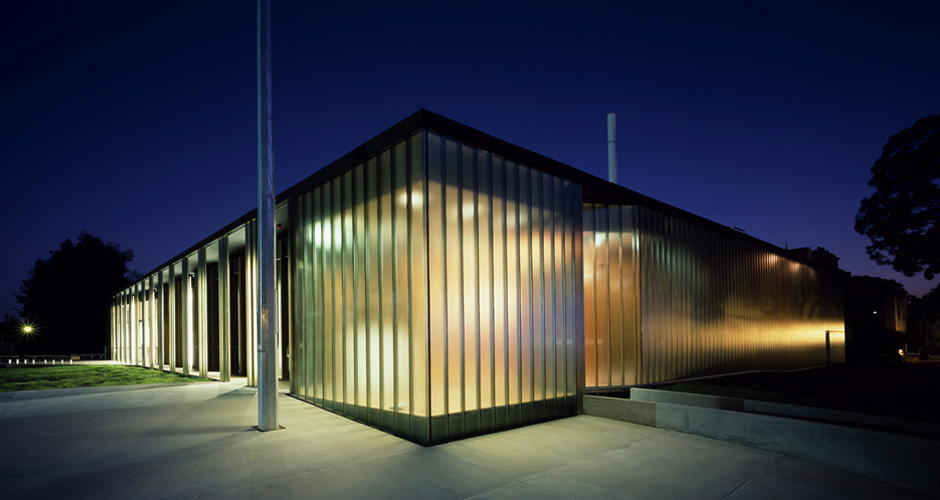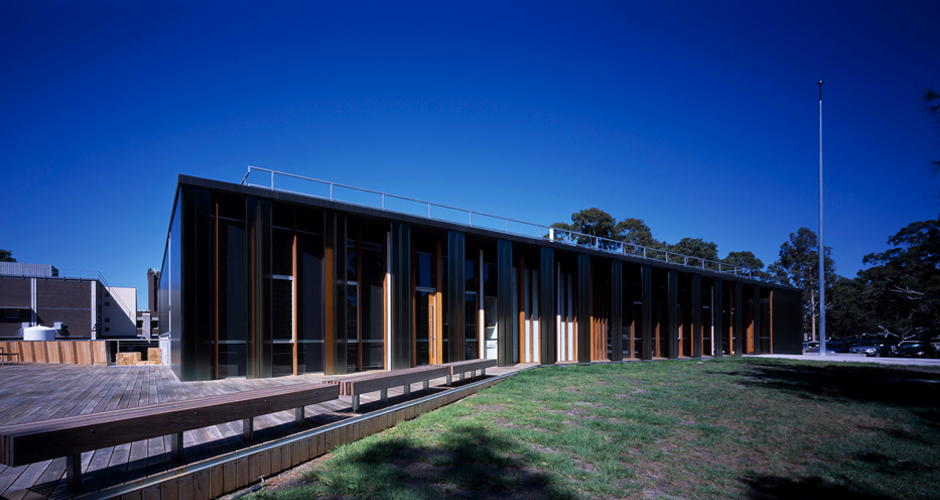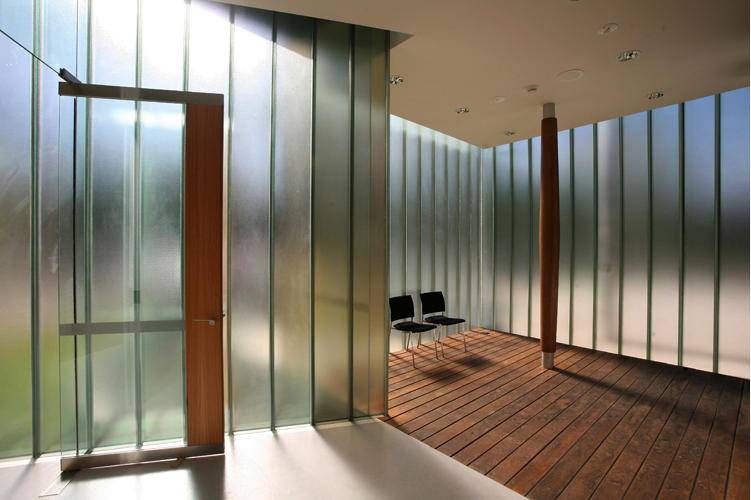
“Laboratories and research facilities with a human context and dimension are rare commodities. Monash University has a new facility designed by Architectus which incorporates the stringent technical requirements for housing electron microscopes into a beautifully composed form. The elegant structure sits independently on a mound sculpted from the earth; the freestanding form continues the original tradition of “pavilion” type buildings on the Clayton campus. The building’s plan is a perfect square, with the roof sloping across the diagonal. The nine microscope labs are cocooned in multiple layers of structure and material. The plywood bracing of the fully timber structure is honestly displayed in the tall narrow connecting corridors surrounding the separate, sealed labs and imbue these spaces with an ethereal feel. The outer skin of interlocking glass planks provide filtered light and create a sense of serenity.

To eliminate stray electromagnetic fields no lifts could be included in the building, nor any continuous steel structure. Fluorescent lights could not be used and all metal ductwork and pipework had to be fitted with insulation breaks every six metres. The slab reinforcement had to be individually earthed and as standard lightening protection creates a continuous metal loop, twelve metre high lightening masts have been positioned on two corners of the building as protection. Sound vibration (i.e. noise) is minimised by using low velocity displacement air supply, locating the plant in a separate isolated building and isolating all building elements through meticulous detailing.

The facility supports national and international research projects and over 100 postgraduate students. Circulation is intentionally designed to promote crossing of paths, inviting and flexible break-out areas are provided and linked to communal areas outside, enabling easy interaction between researchers and visitors.
Ultimately, this building successfully cocoons its nine precious microscopes within the core, protecting them from anything which could adversely affect their performance. It is a building of layers, from the sheltering mound of earth, to the outermost skins of the structure, right down to the innermost containers which hold the microscopes themselves.”
Awards
– 2009 RAIA VIC Public Architecture Award
– 2009 RAIA National Public Architecture Award
– 2009 Australian Acoustical Society Excellence in Acoustics Award
– 2009 Engineering Australia Engineering Excellence Award for Infrastructure
Project Details:
Location: Clayton, Victoria, Australia
Type: Educational – Public
Architects: Architectus – www.architectus.com.au
Client: Monash University
Floor area: 1400 m²
Completed: 2007
Original value: $37m


